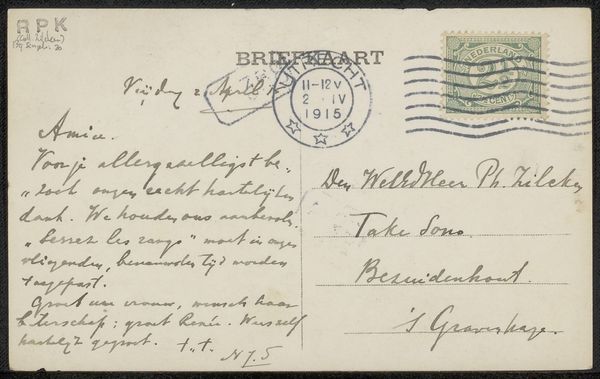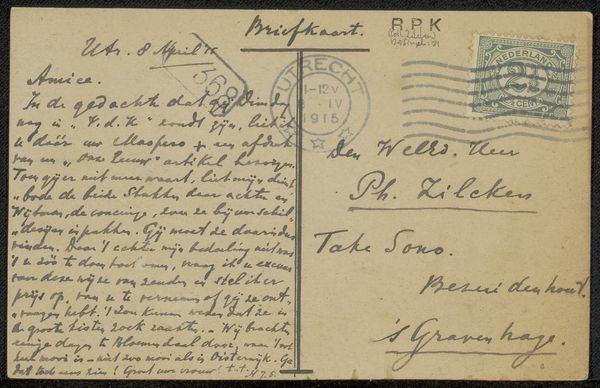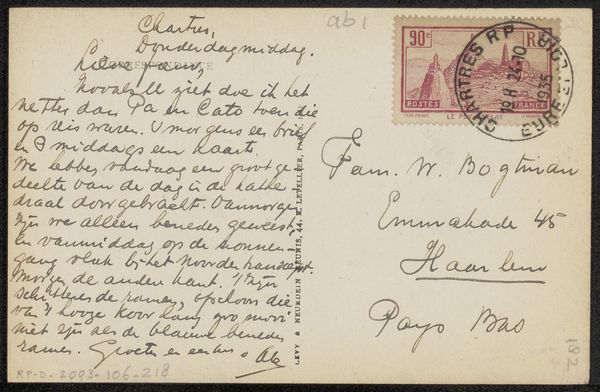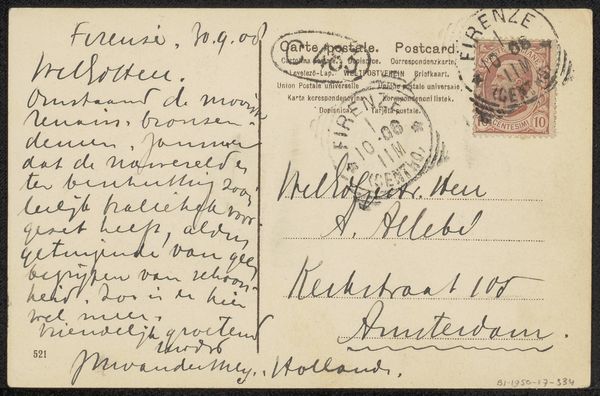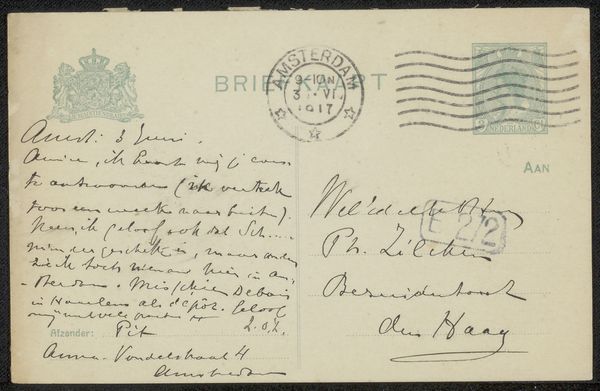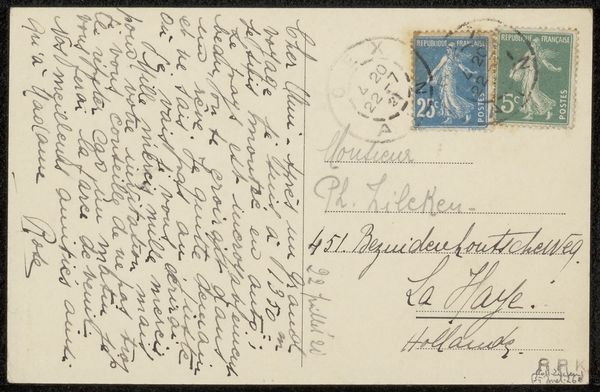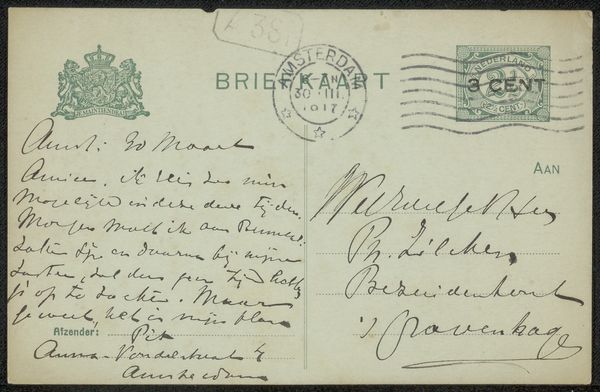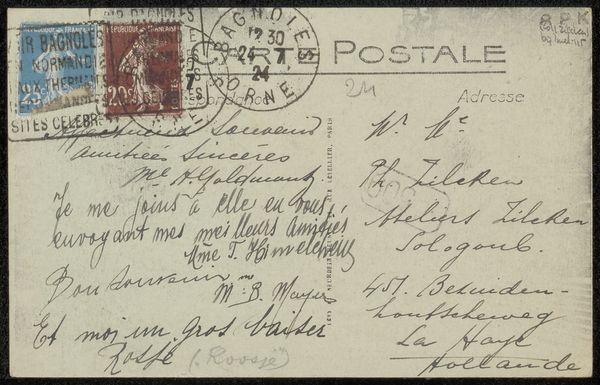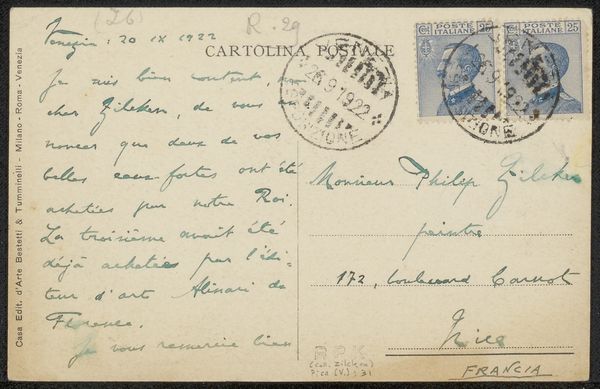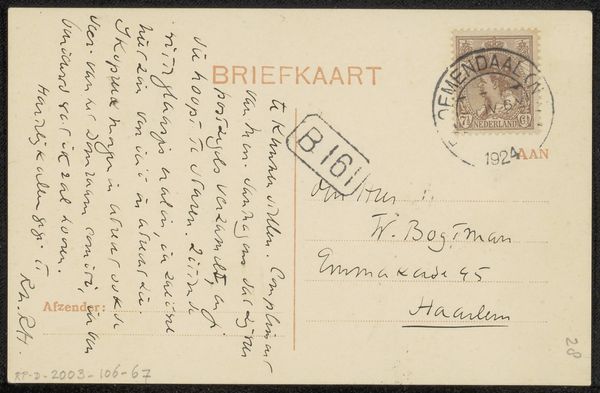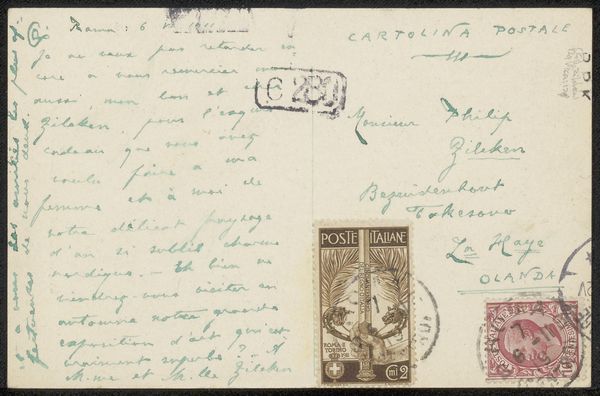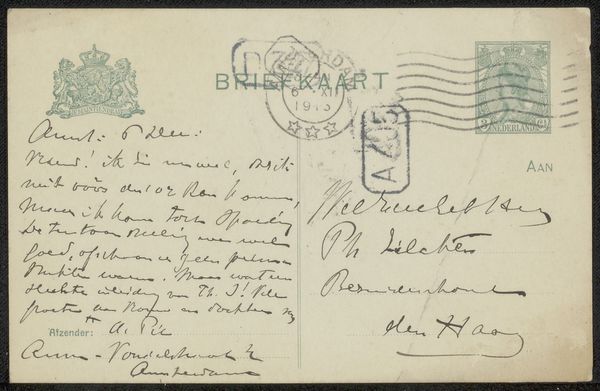
drawing, ink
#
drawing
#
ink
#
calligraphy
Copyright: Rijks Museum: Open Domain
Editor: Here we have “Prentbriefkaart aan Philip Zilcken,” or "Postcard to Philip Zilcken," likely from 1919, an ink drawing with calligraphy by N.J. Singels. It feels very personal, a glimpse into someone’s life. What catches your eye in this piece? Curator: Well, beyond the obvious intimacy of the handwriting, which acts as a direct connection to the sender, it's the layering of time itself that I find compelling. Look at the stamps – remnants of a bygone postal system, acting almost like talismans carrying wishes or news. How do these everyday symbols evoke the era for you? Editor: They speak to the slowness of communication then, versus instant messaging today. Each stamp is like a little monument. The handwritten message adds another layer... almost secretive. Curator: Exactly. The act of writing, especially calligraphy, becomes a form of portraiture in itself, imbuing the message with character beyond the literal text. The very strokes carry emotional weight, revealing a human presence now lost. Consider how this tangible connection differs from our modern, digital exchanges. Do you see it also? Editor: Definitely. There's a sense of fragility. It’s a message that has survived through chance. Digital media are ephemeral, but a physical card becomes an artifact. Curator: Indeed. It transcends its original purpose, turning into a historical echo chamber that invites us to contemplate both the universality and the specificity of human experience through cultural symbolism. Editor: That’s a great point – it’s like this card becomes more important with time, holding more meaning than it originally did. Curator: Precisely, turning it into a visual archive that has the chance to express the symbolic connections of time.
Comments
No comments
Be the first to comment and join the conversation on the ultimate creative platform.
